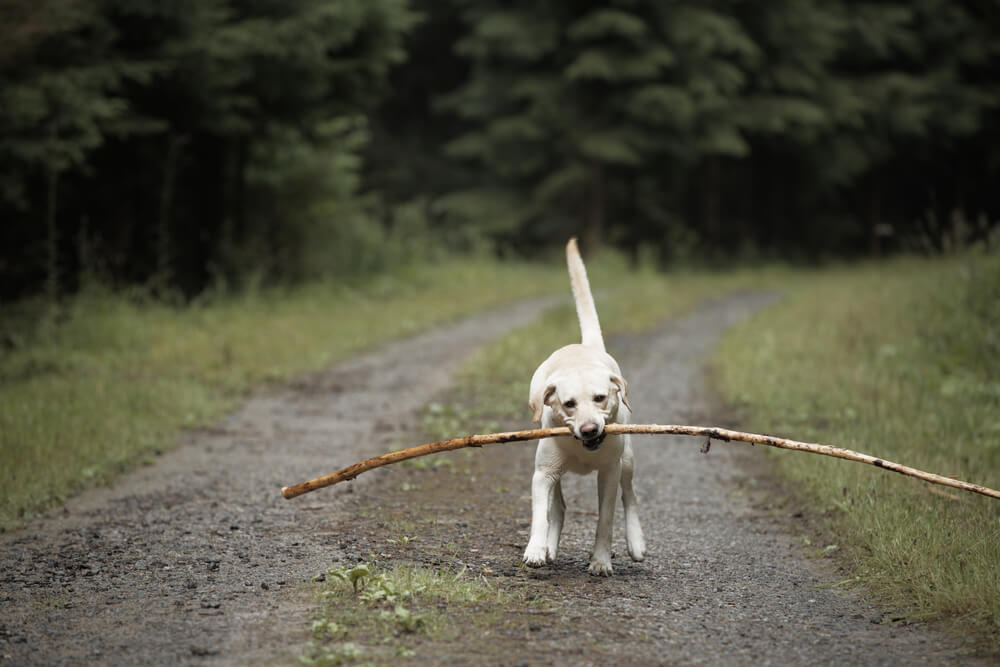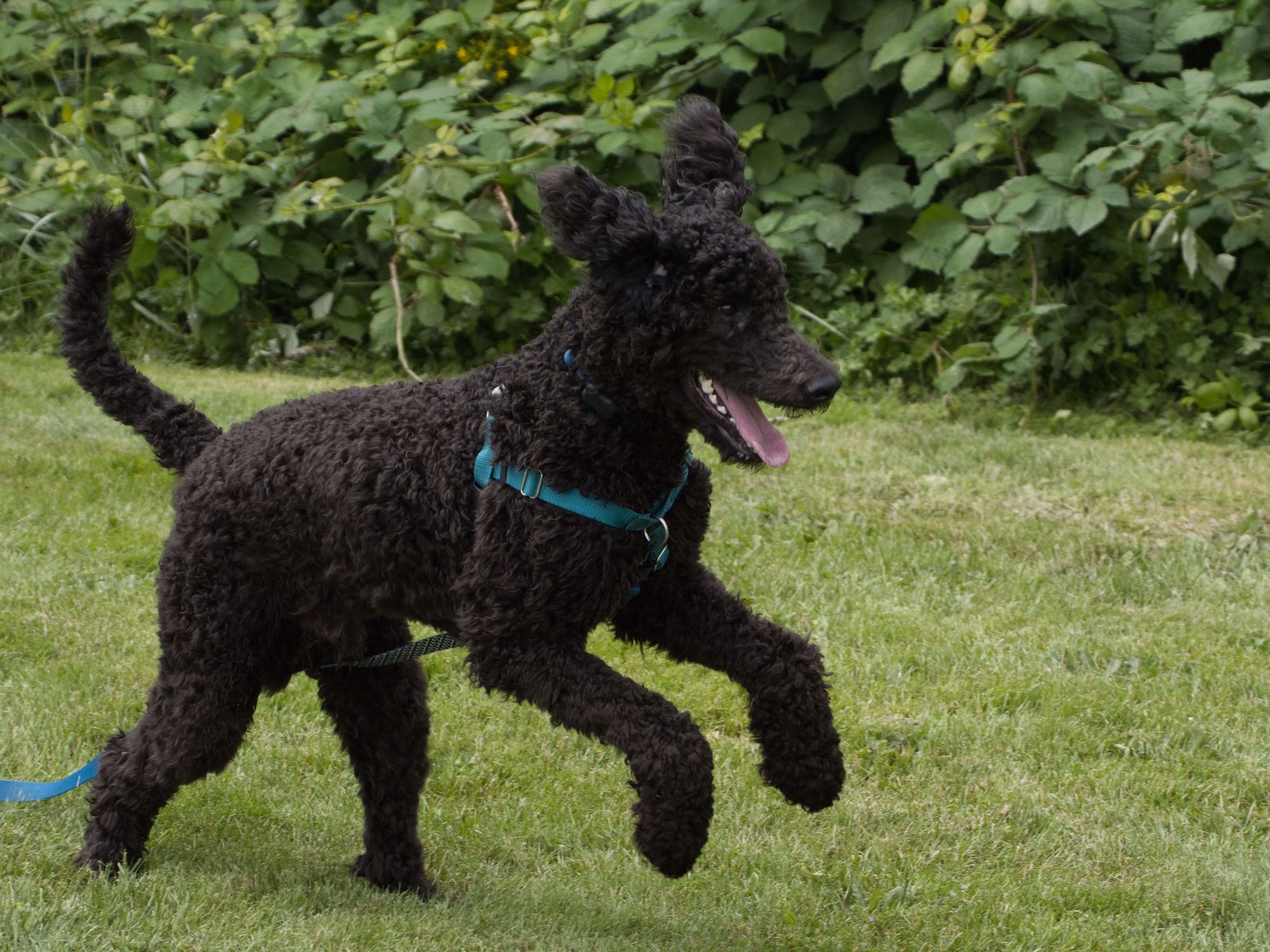Hey Ollie blog readers! We’re offering you an exclusive 60% OFF your starter box! Try now!
Hiking can be a really fun activity for both you and your dog. Before you head out and hit the trails, there are a few things to consider. Some dog breeds are better suited for hiking than others. You’ll want to consider your dog’s fitness level, paw size, and type, as well as the type of coat they have. Other factors in how suitable your dog is for hiking can include the climate you’re going to hike in and the level of difficulty of the trails you’ll be following (or blazing yourself!).
Most dogs of all coat types and fitness levels can handle a relatively flat trail in a moderate climate. Remember that dogs run warmer then humans, so if you’re breaking a sweat, chances are so is your best friend.
If you are a more experienced hiker or looking at trails that have hills, mountains, or other obstacles, there is more to consider and some advanced planning you’ll need to do to ensure that your hike is a safe and enjoyable experience for both you and your dog.
Six best dog breeds for hiking and climbing
While dogs of any size, shape, and breed can enjoy going for a hike, some breeds are predisposed to excel as hikers. This can be due to their athletic ability or drive to work.

-
- Australian Shepherds
These medium-sized athletes enjoy time on the trails. They love to work with their owners and may see a long hike as a great opportunity. Australian Shepherds require a lot of exercise, and a long hike might be just the thing to help them get all their energy out!
- Australian Shepherds

-
- Siberian HuskiesThese dogs are bred to pull sleds and travel long distances making the husky an ideal hiking companion. This is especially true if you’re hiking in cold weather as these dogs thrive in the snow and ice.

-
- Bernese Mountain DogsThis breed literally has mountain in its name! Bernese Mountain Dogs are bred to work and hike and will make a great partner to hit the trails with.

-
- Welsh CorgisWhile these dogs are small and don’t exactly look like the best hiking companions, they are bred for work and will enjoy hiking with you.

-
- Labrador RetrieversLabs are a popular pet in many US households. They are also athletic, and many enjoy hunting, hiking, and swimming, making them an ideal choice as a partner on the trails.

- MuttsAt any given time, US animal rescues and shelters are filled with dogs who would love to be your partner in all things, including hiking. If you’re looking for a new hiking partner, visit your local shelter or rescue and inquire about dogs who might enjoy blazing trails with you. An adoption coordinator or volunteer can tell you more about the dogs that they believe will thrive when offered the opportunity to hike with you.
Seven tips for hiking with your dog
-
Take your pet to the vet
Before participating in a hike or any other strenuous activity, take them to the vet to make sure they are in the right physical condition to participate safely. Dr. Karen Becker recommends you ask yourself (and your vet) these
four questions. If your pet is overweight, older, or has a medical condition, your dog’s doctor can help you make a plan to modify activities to make it safe for your pet to participate with you. This could include choosing a flat trail, limiting the amount of time they can participate, or selecting a more appropriate activity. Once you’ve gotten a clean bill of health and discussed modifications with your vet, you’re ready to start planning your first excursion. -
Research local trails
Once you have a good understanding of what level of activity is appropriate for your pet, do some research to find a trail that fits your criteria. Consider the length of the trail and level of difficulty as well as the distance you’ll need to travel. For a dog that loves to hike but hates being in the car, you may be limited (at least at first) to trails that are only a short drive from your home. You can consult others who hike with their dogs to get a sense of which trails are best to hike with your pup.
-
Make sure you understand the rules
Before you hit the trails, make sure you know the rules and what to expect. Is your pet appropriately vaccinated, and do you need to have proof? Can your dog go off-leash, or do you need to hold on to your leash for the duration of your hike? Knowing all of the rules will set you and your dog up for a successful day out. These tips from the Adirondak Council will help you be successful as you hike with your best friend and respect the trails you’re hiking together.
-
Take water, snacks, and supplies
Before you hit the trail, make sure you have plenty of water, a snack for you and your pup if you’re going to be gone longer then an hour or two and anything else you might need. This could include sun protection, bug repellent (make sure you have something safe for your dog), and a blanket to put down if you need to rest. For a more serious hike, you may need to pack a first aid kit too. Include supplies for both humans and canines. The Appalachian Mountain Club recommends these 10 essential supplies for your dog when you head out for a long hike.
-
Have an emergency plan
If you’re more advanced hikers or heading out alone, make sure you have an emergency plan. Cell phone service could be limited in heavily wooded areas. Before you head out, make sure someone knows where you’re going and when you’ll be back. That way, even if you can’t call for help, if you don’t return on time, someone will know to go looking for you and your pet.
-
Have fun!
You’ve researched, prepared, and made lots of plans. Now it is time to hit the trails and enjoy some bonding time with your very best friend. Hopefully, you’ll find some other friendly hikers along the trail who can take a picture to share.
The Ollie blog is devoted to helping pet parents lead healthier lives with their pups. If you want to learn more about our fresh, human-grade food, check out MyOllie.com.
Tagged As:

The nutrition your dog needs,
the food they want.

Enjoying our articles? Subscribe our Newsletters and get new articles directly to your inbox
You might also like
21 July 2025
6 MINS READ
Poodle Breed Guide: Pros and Cons of Poodles
Curious about Poodles? This detailed Poodle breed guide breaks down the key pros and cons, plus tips on caring for Standard, Miniature, and Toy Poodles.
25 March 2025
6 MINS READ
Yorkie Dog Breed Guide: Yorkie Pros & Cons
Thinking about adding a Yorkie to your family? This Yorkie dog breed guide covers the pros and cons, care tips, and what to expect with these tiny, spirited pups.
25 March 2025
5 MINS READ
Collie Temperament: 6 Personality Traits Explained to Get to Know Collies Better
Described by the American Kennel Club as devoted, graceful and proud, the collie is ranked 38th on their list of most popular breeds. While many people think of Lassie when they think of the coll…







